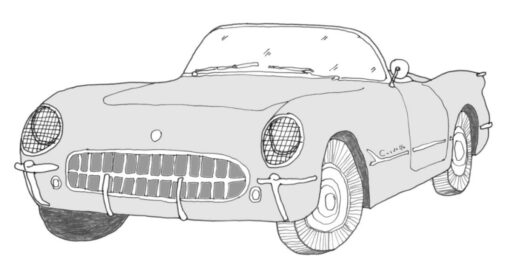Next year marks 140 years since the debut of the Benz Patent-Motorwagen, the world’s first automobile, a modest, open-air vehicle that could only manage 10 mph with less than one horsepower.
Since then, cars have evolved dramatically, a transformation explored in The Driving Machine: A Design History of the Car, a new book by Witold Rybczynski. In his characteristically engaging style, Rybczynski offers a personal yet wide-reaching take on how cars have shaped the modern world and where they’re headed.
READ MORE: Extremely rare Ford with only 19 other versions on the planet is heading to auction for £700K

An architect and emeritus professor of urbanism, Rybczynski’s shift to writing about cars may seem unusual, but he’s a lifelong admirer of thoughtful design. In the book, he reflects on the 15 cars he’s owned and the auto industry’s “special period” from the 1960s to the early 2000s, when gas-powered cars reached a peak in innovation and reliability.
While he’s uncertain about the current, tech-driven era of digital integration in cars, Rybczynski acknowledges it represents a new frontier, one very different from the hands-on era he fondly recalls.

The Driving Machine frequently highlights General Motors’ legacy. Rybczynski credits Harley Earl, GM’s pioneering designer, with introducing the concept car and full-size clay models—a technique still fundamental to car design today. He notes that GM President Alfred Sloan played an equally transformative role, introducing annual model updates and interchangeable components to control costs.
Rybczynski likens Sloan’s strategies to Apple’s yearly iPhone updates, a practice now common in the auto industry. According to Rybczynski, Sloan’s model also created “steppingstones” within GM’s lineup, allowing customers to upgrade as they advanced in life.

The book also spotlights icons like Bill Mitchell, who styled the 1963 Corvette Sting Ray, and Edward Cole, who developed Chevrolet’s famed small-block V8 engine and championed the rear-engine Corvair, a popular 1960s car that later faced safety scrutiny from Ralph Nader’s Unsafe at Any Speed.
In the book’s closing chapters, Rybczynski contemplates the future of the automobile. He sees a safer, more efficient era, but one he feels will lack the quirks and customization possibilities of earlier decades.


With features like automated doors, parking assist, and engine silence replacing manual engagement, he laments the loss of the “tinkering and tuning” culture that defined car enthusiasts for generations. Nonetheless, as cars evolve, Rybczynski suggests that advanced safety and comfort features are benefits that are hard to resist, even if they come at the cost of hands-on appeal.
READ MORE: Opel Expands Electric Vehicle Lineup with New All-Electric SUV Trio and Light Commercial Vehicles
Subscribe today for the freshest car news delivered to your inbox




